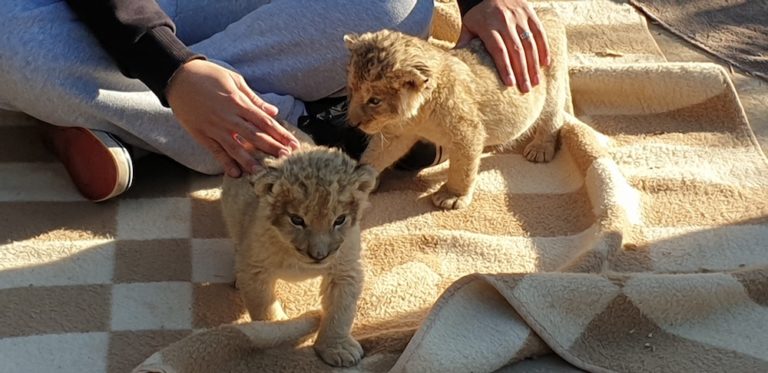In recent years, people have become more aware of the concerns around taking lion cubs (and those of other cats) away from their mothers within days after birth and hand rearing them for entertainment purposes.

Credit: Louise de Waal
This practice intentionally brings the females back into oestrus (become fertile) much quicker and feeding the cubs with puppy formula (as most places do) often leads to nutritional deficiencies, diseases and even death.
Captive predators are oftentimes subjected to crippling intensive breeding cycles and are kept in inappropriate, overcrowded and often unhygienic conditions, all so tourists can pet them.
South Africa’s captive lion population is now estimated to be as high as 12,000 lions with thousands of additional other big cats, including cheetahs, leopards, caracals, servals, as well as exotic species such as tigers, jaguars, pumas and even ligers (crossbreed between lion and tiger).
The links between tourism activities, such as cub petting, walking with lions, ‘canned’ hunting and the lion bone industry are well-documented. Despite what the owners of petting facilities may tell the public, a hand-reared lion habituated to humans can never be returned to the wild and will ultimately only have value in the trophy hunting industry or lion bone export trade.
This incessant and legal commoditisation of captive bred lions has led to the export of nearly 2,000 lions per year as live exports, hunting trophies or skeletons.
Experts agree that we humans have a deep-seated need to connect with the wild – with nature. ‘The desire to form emotional connections with non-human living creatures has only gotten stronger as humans have traded forest-dwelling for office cubicles and concrete jungles’, states Susan Clayton, Psychology and Environmental Studies researcher at the College of Wooster.
The emphasis on the entertainment value of captive wildlife, however, causes irreparable damage.

Credit: Supplied
The best and most eco- and animal friendly way to learn from and appreciate wildlife is to visit national parks and private game reserves to observe these magnificent creatures in their natural habitat.
Before you visit any captive wildlife facility, check out the Southern Africa Tourism Services Association (SATSA) tool to help you make the right decision in six simple questions. It guides you in identifying those wildlife activities to support and which to avoid.
Genuine sanctuaries do not breed or trade their animals, and they do not allow any human interaction. A true sanctuary offers the animals in their care a safe ‘home for life’.
Remember, any interaction with captive wildlife (petting, riding, walking, feeding or using them as photo props), whether it involves infants or adults, sadly never benefits the captive wild animal involved.
Source: Louise de Waal, Blood Lions
Also read: New SATSA wildlife guidelines discourage wildlife interactions
The Dark side of animal encounters: How to do your part
Image: Pexels
You may also like
Related Posts
The Arizona Game and Fish Department (AGFD) is counting the days until the eggs of...
read more
Jock Safari Lodge has formed an official long term partnership with the Wilderness Foundation Africa...
read more
A new campaign, designed to conserve South Africa's shark and ray populations, has been launched....
read more